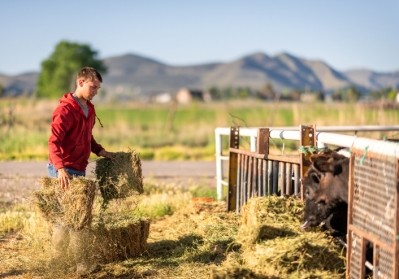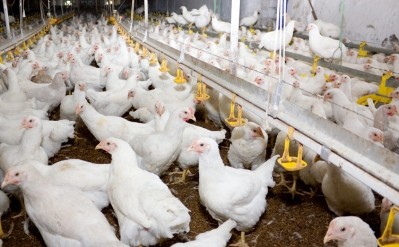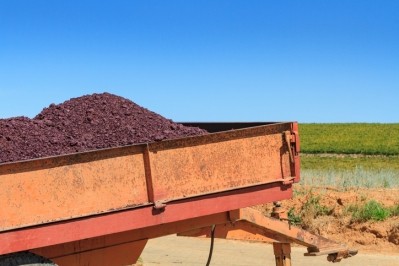Feeding highly digestible sugarcane silage may improve cattle intake, rumen passage

An international team of researchers explored the use of sugarcane silage with different levels of fiber digestibility harvested during early or late maturity on the feed intake and ruminal health of growing steer. The group published details of its work in the journal, Animal Feed Science and Technology.
“An experiment was developed in order to evaluate the effects of differences in NDFD [neutral detergent fiber digestibility] between sugarcane genotypes harvested for silage at different maturity stages on intake, rumen kinetics and metabolism, and microbial population of beef cattle,” the researchers said.
The researchers found that feed intake was the highest when cattle received early-maturity silage with low neutral detergent fiber digestibility (NDFD) and ingestion of neutral detergent fiber assayed with heat-stable amylase and expressed exclusive of residual ash (aNDFom) was higher for early-maturity diets than late-maturity diets. The rumen pool of dry matter (DM), aNDFom and indigestible aNDFom (iNDF) increased with the low-NDFD genotype sugarcane silage was used.
However, the turnover of both aNDFom and digestible aNDFom (daNDFom) along with the aNDFom passage rate increased when cattle received a diet with high-NDFD sugarcane silage, they said. The pace of aNDFom passage increased when early-maturity sugarcane silage was fed.
Ruminal pH was higher when cattle ate high-NDFD genotype, early-maturity silage, they said. Ruminal short-chain fatty acid (SCFA) was higher when cattle received low-NDFD genotype, early-maturity silages.
Animals eating a high-NDFD sugarcane genotype had greater proportions of propionate than cattle on the low-NDFD genotype, they said. Cattle displayed different ruminal bacterial populations when they ate late-maturity sugarcane silage compared to low-NDFD silage.
“The intake of animals fed sugarcane silage-based diets is likely limited by metabolic pathway that can be attributed to fermentation of sugars and accumulation of fermentation end products in the silage,” the researchers said.
“However, the intake of steers can be reduced when fed very low-NDFD sugarcane genotypes, such as when the low-NDFD genotype was harvested at late maturity,” they said. “Using sugarcane genotypes with high-NDFD, as in other forages, can positively affect rumen pool of nutrients and fiber kinetics.”
Addressing forage-based rumen fill
Cattle intake of diets with high-forage NDF and low-energy concentrations is reduced by rumen filling, the researchers said. Feed intake of a highly-fermentable and high-energy diet is governed by a metabolic pathway.
Rumen fill limits feed intake based on the slow rate of passage of ruminal contents, they said. But, increased forage NDFD reduces the filling effect by increasing the rate of disappearance for NDF from the rumen.
Soluble sugars, like sucrose, maybe alternative energy sources for diets but have different fermentation characteristics than dietary starch, they said. Adding, “When sugars were used to partially replace dietary starch the rumen pH did not reduce but increased, even though sugars have faster fermentation rate than starch.”
Swapping sugars for starch also expands the proportion of butyrate in the rumen and feed intake for dairy cows, they said.
Why examine sugarcane genotype, maturity?
As sugarcane matures, sugar collects and fiber digestibility falls establishing a forage ingredient that is potentially able to control cattle intake in two ways – through a high level of soluble sugar and poor fiber digestibility, the researchers said.
Ensiling sugarcane at the start of the harvest season may be a way to improve NDFD by prompting the harvest of “early-maturity stage sugarcane.”
Breeding forages to have better NDF digestibility is a way to improve the nutritional quality of forage used in ruminant feeds, they said. However, sugarcane breeding has focused on sugar accumulation rather than fiber quality.
Sugarcane, however, is also the most common fiber source used in diets for cattle on Brazilian feedlots, they said. Previous research assessing sugarcane genotypes found a wide range of NDF digestibility.
Feeding trial details
Two different sugarcane genotypes were raised for the feeding trial – one with a high NDFD and one with low NDFD, the researchers said. Both genotypes were raised until they reached maturity with 16% apparent sucrose at which time half the crop of each variety was harvested.
The remaining plants of both genotypes were harvested three months later, they said. Following harvest, sugarcane material was ensiled.
In the feeding trial, eight cannulated steers received one of four diets, they said. The diets included low-NDFD silage at the early or late maturity harvest and high-NDFD silage from an early and late maturity harvest.
The diets contained 40% sugarcane silage on a DM basis and a concentrate made with corn, soybean meal, urea, limestone, salt and minerals, the researchers said. Diets were designed to support the body weight gain of 1.2kg per day.
“The experiment was designed as a duplicated 4 × 4 Latin square and lasted for 84 d, with four periods of 21 d, with the last 4 d in each period used for feed and orts sampling, ruminal evacuation, and ruminal fluid collection,” they said.
Feed and ingredient samples were collected on days 18, 18 and 20 of each feeding period and rumen samples were gathered on days 19 and 20 for analysis and to determine bacterial populations, they said. The aNDFom turnover rate was established along with the aNDFom passage rate.
Ruminal liquid volume and liquid turnover pace were measured on day 21 and ruminal fluid samples were collected to check for pH, ammonia and short-chain fatty acids (SCFA), they said.
Results
“Increased understanding of intake regulation of sugarcane-based diets is critical to formulate diets for improved health, productivity, and efficiency of nutrient utilization in ruminants,” the researchers said.
The low-NDFD genotype diet saw the greatest dry matter intake (DMI), but only for early-maturity silage, they said. That diet also increased the intake of iNDF.
“Intake of aNDFom was greater for diets containing sugarcane silage harvested early than for diets containing sugarcane silage harvested late,” they said. Ruminal DM, iNDF and aNDFom pools were larger for diets with low-NDFD, they added.
Cattle on the high-NDFD sugarcane silage saw an increased turnover of aNDFom and daNDFom along with a faster aNDFom passage rate, they said. And, aNDFom along with the passage rate of aNDFom were greater for diets with early-maturity sugarcane silage.
The turnover of liquid in the rumen sped up with low-NDFD genotype, early-maturity silage, the researchers said. And the volume of ruminal liquid was larger for diets with early-maturity silage.
High-NDFD, early-maturity silage tended to increase ruminal pH and SCFA concentration increased when cattle received low-NDFD, early-maturity silage, they said.
“Proportion of propionate was greater in the rumen of animals fed high-NDFD sugarcane genotype compared to animals fed low-NDFD sugarcane genotype, when averaged over maturity stages,” the researchers said. “Diets containing low-NDFD genotype resulted in a greater proportion of BCFA [branched-chain fatty acids] and greater A:P [acetate:propionate] ratio in the rumen, when averaged over maturity stages.”
But, the proportion of butyrate was higher for cattle eating late-harvested silage compared to early-harvested silage, they added.
The population of Megasphaera elsdenii increased in the rumen for animals on the late-maturity silage, and Fibrobacter succinogenes and Ruminococcus albus tended to be higher for animals on the low-NDFD genotype silage, they said.
“Feeding growing steers with high-NDFD sugarcane silage can positively affect rumen pool through faster passage rate and turnover of fiber that might benefit intake when metabolic pathways are not driving satiety,” the researchers concluded.
Source: Animal Feed Science and Technology
Title: Effect of sugarcane genotype and maturity stage at harvest on feed intake and ruminal parameters of growing steers
Authors: D.O. Sousa, A.V. Velasquez, C.A. Oliveira, J.M. Souza, E. Nadeau, L.F.P. Silva
DOI: doi.org/10.1016/j.anifeedsci.2019.114258










